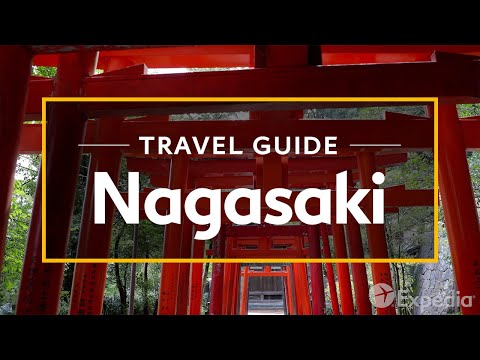
Nestled on the northwest coast of Kyushu island in Japan, Nagasaki is a city that tells stories – from tales of historical international trade to poignant reminders of World War II. This city, which harmoniously blends Japanese culture with foreign influences, offers a unique atmosphere that makes it a must-visit destination. This travel guide will explore the historical significance, cultural wealth, and breathtaking landscapes that make Nagasaki an unforgettable travel spot.
## Historical Insights
Nagasaki has been a significant port city that played a crucial role in foreign trade during the isolationist Edo period in Japan. It was the sole gateway for Western influences into Japan for many years, particularly through Dutch and Chinese traders. The **Dejima Island**, initially built to confine foreign traders and prevent the spread of Christianity, now serves as an open-air museum where visitors can learn about this period of cultural exchange and isolation.
One cannot talk about Nagasaki without acknowledging the tragic event of August 9, 1945, when it became the second city after Hiroshima to be devastated by an atomic bomb during World War II. The **Nagasaki Peace Park** and the nearby **Nagasaki Atomic Bomb Museum** serve as somber reminders of this catastrophic moment in history. These sites encourage reflection on peace and human resilience.
## Cultural Exploration
The influence of various cultures is evident in Nagasaki’s architecture and local cuisine. **Glover Garden**, an open-air museum showcasing mansions built by foreign merchants during the Meiji Restoration, offers panoramic views of Nagasaki harbor and insight into Western architectural impact on Japan.
Culinary enthusiasts will enjoy Nagasaki’s unique dishes like **Champon** (a hearty noodle soup) influenced by Chinese cuisine, reflecting its cosmopolitan past. The local sweets such as **Castella**, a sponge cake brought by Portuguese merchants, are a testament to the blend of Eastern and Western traditions.
## Natural Scenery
Beyond its urban landscape, Nagasaki is surrounded by natural beauty ideal for nature lovers. A trip to **Mount Inasa** provides spectacular night views of the city from its observation deck – often ranked among Japan’s best night views. Additionally, for those willing to venture further away, the Goto Islands offer pristine beaches with crystal-clear waters that make them perfect for relaxation or snorkeling.
## Festivals
The vibrant spirit of Nagasaki comes alive during its various festivals throughout the year. Perhaps most notable is the **Nagasaki Lantern Festival**, celebrated during Chinese New Year when over 15 thousand lanterns light up Chinatown with dazzling displays inspired by Chinese artistry.
During autumn, one can witness Kunchi Festival celebrating both Shinto traditions and Chinese influences through dance performances featuring colorful costumes at Suwa Shrine – this festival symbolizes unity between different cultures.
## Plan Your Visit
When planning your visit to Nagasaki:
– Consider staying near tourist hubs such as JR Nagasaki Station area or along Hamanomachi Arcade.
– Utilize trams which are convenient for getting around major attractions.
– Spring (March-May) or fall (September-November) provides pleasant weather making it ideal for exploring outdoor sights comfortably.
A trip to Nagaski is more than just sightseeing; it’s an immersive experience into centuries-old narratives where each monument tells stories; streets depict cultural confluence; food reflects shared histories — all held together by warmth from locals who welcome every visitor into their resilient home ready once more for global embrace after long periods of seclusion due under historical circumstances beyond their control setTitle:NagaskiVacationTravelGuide|Expedia
